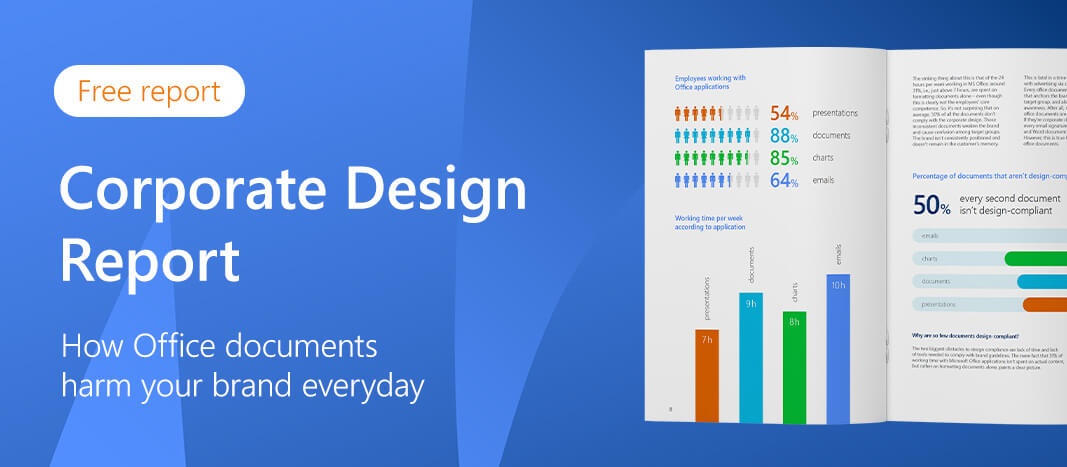Brand investment: why you should start investing in your brand now
Branding strategy, corporate branding, and employer branding are essential to sustainably position a brand. All these concepts have one common denominator: brand investment. It doesn’t work without it. If you don’t invest effectively in your own brand, you’ll have a hard time surviving in the today’s market.
Don’t put off investing in your brand. It doesn’t matter whether you run an established company or a start-up - brand investment pays off!
- What exactly is meant by brand investment?
- Why an investment in your brand pays off
- Why brand investment is important right now
- What does ROI have to do with this?
- How do you calculate the return on brand investment?
- Invest in your brand now
What exactly is meant by brand investment?
Brand investment refers to the expenditure a company makes to improve the perception and positioning of its brand. This can include a variety of measures, such as marketing, advertising, public relations, market research, social media marketing, product development and much more.
The aim of brand investment is to strengthen awareness, image, and perception of the brand among customers and to differentiate it from other brands. It builds a strong emotional bond between the brand and the customers and maintains a lasting customer loyalty.
Brand investment is a long-term process and often requires significant funding and resources. Companies should plan carefully and make strategic decisions to ensure that their brand investments achieve the desired impact and pay off in the long term.
Why an investment in your brand pays off

Companies invest in many things. But most of the investments are in physical products or operating equipment, the success of which can be proven relatively quickly by figures. Investments in the brand often don’t come first because the value and benefit of a brand are often underestimated. One aspect is often forgotten: with every product and service sold, you automatically always sell your brand as well. This point even goes a bit further, as you also sell your brand with every public appearance, with every communication method, and with every document sent out.
Here are further reasons why it makes sense to invest in your own brand:
- Increase brand awareness: by investing in your brand, you ensure that more people learn about your company and your products. Increased brand awareness helps you attract more customers and increase your sales.
- Build brand loyalty: when customers value and trust your brand, they’re more likely to buy from you again and tell others about your company.
- Increase brand equity: a strong brand has a higher brand equity. By investing in your brand, you ensure that it’s perceived more strongly and therefore has a higher value. This also has a positive impact on your company’s value in the long run.
- Secure competitive advantages: by investing in your brand, you secure a competitive advantage over other companies. A strong brand ensures that customers are more likely to buy from you than from your competitors.
- Promote long-term growth: investing in your brand drives long-term growth. A strong brand makes it easier to introduce new products or expand into new markets.
Why brand investment is important right now
Markets are becoming increasingly saturated. They’re developing steadily and ever faster. The range of media on offer is increasing and customers are flooded with information. Companies are under pressure to generate attention and to complete sales processes quickly and successfully, as well as to constantly shorten product life cycles, to bring innovations to the market more frequently, and follow market developments more closely.
It’s a decisive competitive advantage to position products and services as well as the brand so stands out from the crowd, remains in customers’ memories, inspires trust, and motivates them to make purchasing decisions.

As already mentioned, brand investment is worthwhile for every company. Nevertheless, many companies and decision-makers need a concrete trigger or reason to agree to release financial means and company resources for the brand. Such reasons include:
- Declining or slowly growing revenue
- Change in target groups or addressing the wrong target groups
- Further development of the product portfolio
- Diminishing market position due to successful brand investment by competitors
- Representation of the brand no longer matches the service offering
- Lack of digital perception of the brand
In all your efforts to invest in your own brand, keep one aspect in mind: the “experience gap”. This refers to the gap between the expectations raised and the actual experience with a brand. All investments in your brand should be carefully considered and discussed with experts in the field. There’s no point in presenting your company with features and promises that you can’t fulfill in the end.
What does ROI have to do with this?
ROI is important in relation to your brand investment. It helps you measure the effectiveness and profitability of the actions associated with the brand investment by evaluating the profit achieved in relation to the investment costs. A high return on brand investment indicates that the branding investment has been successful, resulting in higher market value, a larger customer base, and higher customer satisfaction. However, if the ROI is low, it means that the investments may not have been as effective or that other factors have impacted success.
Important: in many areas, such as performance marketing, ROI should ideally be high fairly quickly so that funds and resources invested are promptly offset by sales. When it comes to brand investment and branding in general, this process takes much longer, as it’s more about longer term brand success.
For this reason, it’s important to note that ROI doesn’t take into account all the factors that can influence the success of an investment. Factors such as the duration of the investment, risks and uncertainties, and other indirect effects also play a role. Therefore, ROI should always be used in conjunction with other analysis methods to obtain a complete picture of the profitability of an investment. A cost-benefit analysis lends itself to this because it takes both monetary and non-monetary factors into account.
How do you calculate the return on brand investment?
Even though you shouldn’t use ROI as the sole means of investment control, it still helps immensely to control the success of your investment. The problem here is that you calculate ROI differently in this case than you would for a marketing campaign, for example. This is because in branding there are usually no absolute numbers that you can use to make a calculation.
So how do you get a valid result? Surveys and interviews are the most suitable, but also analysis and tracking of your branding tools in use. This will yield statistics and trends that help you see if you are getting a good ROI from your branding. Also important in this regard are traffic analytics that show how your brand perception is changing as a result of branding development. Additionally, it’s a good idea to look at brand performance using financial metrics. Aspects such as an increase in market share or a decrease in customer acquisition costs show how your brand performance changes as a result of branding investments.
Invest in your brand now
Investing in your brand should always be a step towards brand control. Often, time is money. Unfortunately, the reality is often that branding aspects are weighed against efficiency when creating content - and efficiency usually wins. People think getting content out the door quickly is more important than branding it properly. What seems like a good decision in the short term leads to dilution and thus damage to your brand in the long run. What’s the point of investing a bunch of money in brand guidelines and brand assets if they don’t get used?
Other, important reasons to maintain control of your brand include:
- Protection of brand identity
- Building trust
- Increased brand awareness
- Competitive advantage
- Protection against brand misuse
One way to gain and maintain control of your brand is with the empower® Brand Control solution. Let the solution embody your brand in all your documents. This Microsoft add-in includes, among other things, the integration of your brand guidelines into the Office applications, direct access to all brand assets directly from Office, and even an automatic design check of all your documents. It can even automatically convert of old presentations into the current design.
Do you have any questions? Would you like to test the empower® Brand Control solution? Then contact us! Our experts will gladly help you.
You May Also Like
Related articles

Internationally successful brand management

Your guide to successful brand management


